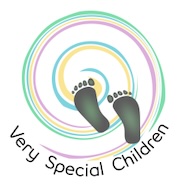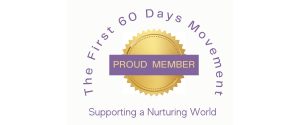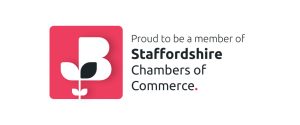Parents/Carers
Absolutely!
I believe the more people who are involved in the child’s development program the better. Family members and supporting members of the extended family are welcome to see my sessions. Seeing your special child‘s achievement is a wonderful feeling and can be very encouraging to continue the work.
It depends on your child and your child’s age. Hence, the first step to meet is to book a call or an assessment with me. Every child and every child’s history are different.
During the assessment I can gain a clear picture on what movement elements your child uses and those they lack. Movement elements are the building blocks of motor development: flexion, extension, rotation and their use in action. The outcome will reflect on what developmental age your child represents. When I understand your child’s movement I can use the right tools to stimulate/trigger/provoke missing elements and functions.
I may use different methods to overcome different problems; however, I will not mix therapy tools as each and every modality has its own principles. Please have a look at my blog articles for further information.
Soft, comfortable wear is recommended. Children are moved to positions that they may have not explored by themselves so clothing must be comfortable. No jeans if possible. Please remember to bring shoes and toys for the session.
As a holistic education and movement specialist, I will work with any young child whose movement development still needs support. Once they reach independent walking level, I will no longer work with them. I am able to recommend well-respected professionals who specialise in autism.
If I had a magic wand, I would change the word ‘therapy’ in the dictionary. We must change the word ‘therapy’ to ‘development support’ or alignment, brain-body-mind integration program.
If I could, I would do anything to encourage parents not to wait… any moment. Today we can start working together to support your baby’s development before birth or on day one.
Children who are exposed to less physical, emotional, personal contacts or they have overactive sensory reactions to touch may react and / or cry during their first few sessions. Parents are always welcome to calm their child in between exercises/activities. However, please read the testimonials about changing behaviour during sessions on my website and social media pages. Once trust is built and children become familiar with the handling, they will all settle.
Older children may also react as a form of communication. They are aware of what is happening, and it is not their choice. I personally like to get engaged with these dominant characters and negotiate.
Due to my own personal circumstances, I mainly work on weekdays but I often include weekend days to ease the pressure on working parents.
I am based in Staffordshire and work with the local communities and families here. However, I offer therapy blocks over three-four days nationwide.
I regularly work in Southwest London and Manchester in particular. Participating families agree to organise their own schedule each day within an agreed time range. The families also agree to share my travel, accommodation and subsistence expenses throughout the three-four days.
Please contact me to discuss this further.
If you have this question in your mind and you are visiting my website, then I am sure that I am able to offer something that you have not tried before. Our human motor development is based on and develops by the increasing amount, range and variety of physical interactions with the physical forces, most importantly gravity. The more and wider the range of the movement collection someone is exposed to, the better the chance that the individual will fulfil their movement potential. This is true to all areas of learning.
Movement disorder can be a result of many issues: some genetics, some neurological, some medical. The most important for me when I choose the right approach is whether the problem is progressive /degenerative, or whether it is the result of a traumatic event such as stroke or Cerebral Palsy, removed brain tumour.
My personal criteria filter is weight. Due to my own physical ability I choose to work with younger children: from birth to 5 years, or older but weighing less than 15 kg.
As an Integrative movement and education specialist, I look at and advise and work with children according to their overall needs. Some modalities are not recommended to use for deteriorating conditions.
We all are units of body-mind-thoughts and emotions. Changing positions with assistance and being exposed to the unfamiliar requires physical, mental and emotional adjustment. Based on our own skills and experiences we have different relationships with learning, challenges and also with change.
Younger children learn quicker as they most likely have had less negative experiences and as a result will not have not built strong habits to cope with their challenges.
In order to see changes in movement, a regular and consistent therapy program is needed. If it is possible, I recommend twice a week, or a therapy block every two months. To ensure continuation and consistency, parents are asked to continue with a home program between blocks.
I always give recommendations to parents how to apply therapy at home. Some parents like to have a strongly structured homework package, others feel more comfortable with integrating therapy into the day. Either way results happen when there is consistency and continuity in your children’ lives.
Organisations
Collaborating with organisations is a win-win matter. Those whose work is already dedicated to improving the lives of disabled children and their families can benefit from additional movement (neuro-motor) input, and we can benefit from extending awareness and sharing practical tools with families.
Depending on the children’s age and needs, we provide custom-made developmental awareness training for parents and staff members to enhance the work/provision of the specific needs of the setting.
Topics may include:
- What are movement disorders (CP, GDD, RGS ), and how do they affect children’s life
- How to recognise signs of early developmental delays and how to act early to prevent further problems (premature babies)
- Practical tools of therapeutic handling throughout the day to regulate emotions, support development and encourage social interactions at home and in social settings
- The efficient tools to improve the movements and functions of a child with neuro-motor impairment (Cerebral Palsy, Global Developmental Delay, Hypotonia, Spasticity, Rare Genetic Syndrome, Brain injuries: Stroke, PVL, IHP, HIE, Meningitis)
All training is designed and delivered to meet the organisation’s requirements and includes theory and practice on the chosen topic through experiential learning.
These sessions are for families with preschool physically disabled children. However, I welcome children with other disabilities, too, for some of our programs. Parents and carers will learn and work together throughout the sessions.
- A space that can accommodate a group of 8-10 children
- Tables and chairs that allow wheelchairs/supported seatings to be positioned (chairs need to go under the table)
- Toys of all kinds
- Floor mattresses (if you have any)
I offer free introduction sessions to everyone.
After introduction, the sessions cost from £12-45/p, depending on the nature of the group. There is a possible fund for movement sessions for families in financial need. Please ask for more information.
Communication and Movement sessions aim at preschool children aged 2 to 5.
Siblings are welcome if they allow the primary carer to focus on the child in need. Other preschool-aged children may enjoy joining the sessions without charge.
Please ask parents to dress the child in comfortable wear. Some clothes (jeans, dresses) may get in the way when children practise floor movement. Leggings and tracksuits are easy to clear, and children can move freely while wearing them. Children should have a supportive shoe for weight bearing practices. If a child is only able to sit in a specialised seating, please bring that along.


